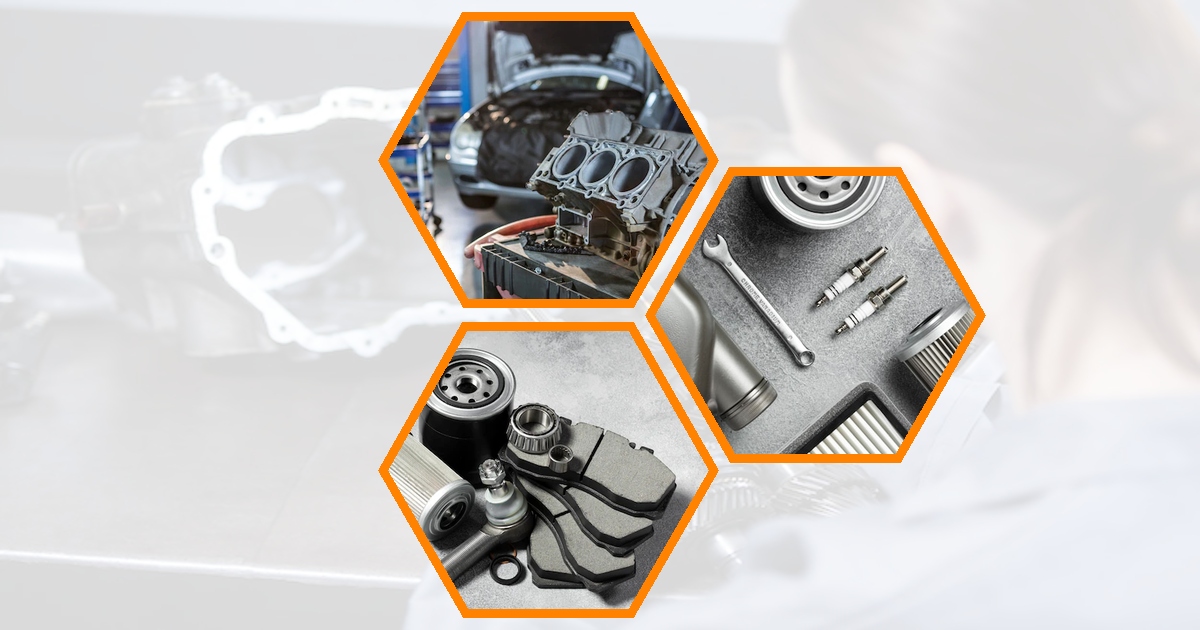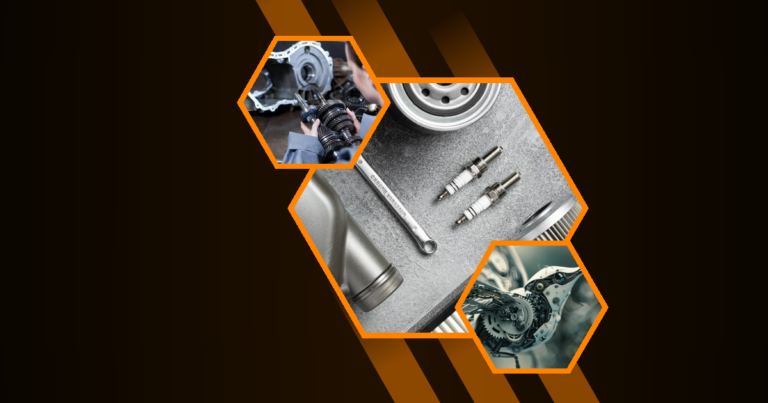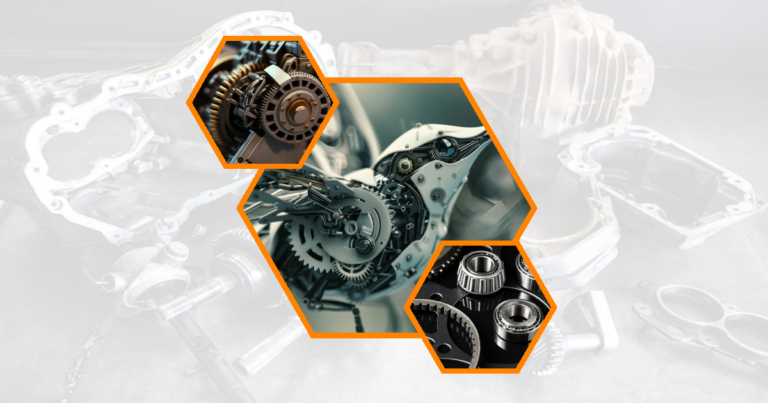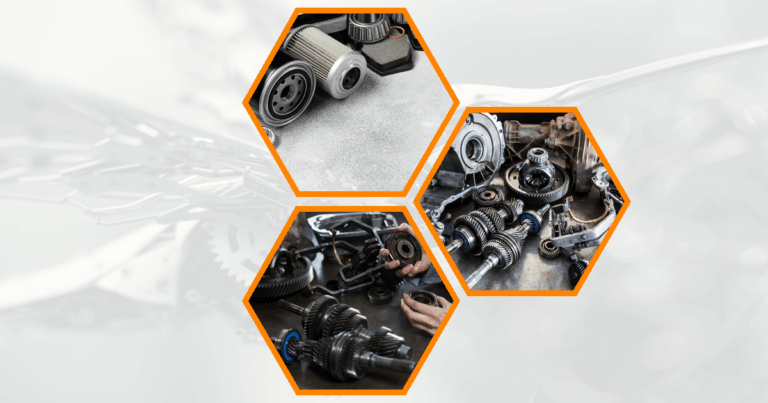B2B Partnerships in the Auto Parts Industry: Benefits and Collaboration Strategies
Business-to-business (B2B) partnerships in the automotive sector have become increasingly important as the industry evolves. These collaborations involve various entities working together to create value, improve efficiency, and drive innovation in the auto parts supply chain.
Types of B2B partnerships in auto parts
B2B partnerships in the auto parts industry come in various forms, each serving a unique purpose. Some common types include:
- Strategic alliances between manufacturers
- Joint ventures for research and development
- Supplier-distributor partnerships
- Technology collaborations
These partnerships allow companies to leverage each other’s strengths, share resources, and create mutually beneficial relationships.
Key players in the auto parts supply chain
The auto parts supply chain involves several key players, each contributing to the overall ecosystem:
- Original Equipment Manufacturers (OEMs)
- Tier 1, 2, and 3 suppliers
- Distributors and wholesalers
- Retailers and e-commerce platforms
- Aftermarket service providers
Understanding the roles and interactions between these players is crucial for successful B2B partnerships in the industry.
The role of collaboration in B2B auto parts partnerships
Collaboration is the cornerstone of successful B2B partnerships in the auto parts sector. It enables companies to:
- Share knowledge and expertise
- Pool resources for greater efficiency
- Develop innovative solutions
- Respond quickly to market changes
By fostering a collaborative environment, partners can achieve goals that would be difficult or impossible to accomplish individually.
Collaboration Aspect | Benefits |
Knowledge sharing | Improved product development, faster problem-solving |
Resource pooling | Cost reduction, increased production capacity |
Innovation | New product ideas, process improvements |
Market responsiveness | Quicker adaptation to trends, better customer satisfaction |
Benefits of B2B Partnerships for Auto Parts Manufacturers
B2B partnerships offer numerous advantages for auto parts manufacturers, helping them stay competitive in a rapidly evolving industry.
Increased market reach and distribution
Partnering with other businesses can significantly expand a manufacturer’s market reach. By collaborating with distributors or other manufacturers, companies can:
- Access new geographic markets
- Tap into established customer bases
- Leverage partner sales channels
This increased reach can lead to higher sales volumes and improved brand recognition.
Cost reduction through economies of scale
B2B partnerships often result in cost savings through economies of scale. By working together, partners can:
- Negotiate better prices with suppliers
- Share production facilities and equipment
- Optimize logistics and transportation
These cost reductions can lead to improved profit margins and more competitive pricing for end customers.
Access to new technologies and innovations
Collaboration in the auto parts industry often involves sharing technological expertise. Benefits include:
- Exposure to cutting-edge manufacturing techniques
- Access to proprietary technologies
- Joint development of innovative products
This technological exchange can help companies stay ahead of the curve in a rapidly evolving industry.
Risk mitigation and shared resources
B2B partnerships allow companies to share risks and resources, leading to:
- Reduced financial exposure on large projects
- Shared research and development costs
- Diversification of product portfolios
By spreading risks and sharing resources, partners can undertake more ambitious projects and explore new opportunities with greater confidence.
- Risk mitigation strategies in B2B partnerships:
- Joint investment in new ventures
- Shared liability agreements
- Diversified product development
- Collaborative market research
Collaborative Strategies for Successful Auto Parts B2B Partnerships
Effective collaboration is key to maximizing the benefits of B2B partnerships in the auto parts industry.
Joint product development and R&D
Partnering for product development and research can lead to groundbreaking innovations. Strategies include:
- Establishing joint research facilities
- Sharing intellectual property
- Combining expertise from different specializations
This collaborative approach can result in faster development cycles and more innovative products.
Supply chain optimization
B2B partnerships can significantly improve supply chain efficiency through:
- Shared inventory management systems
- Collaborative demand forecasting
- Joint logistics planning
These optimizations can lead to reduced costs, improved delivery times, and better overall customer satisfaction.
Co-branding and marketing initiatives
Co-branding strategies can help partners leverage each other’s brand equity and market presence. Effective approaches include:
- Joint advertising campaigns
- Shared trade show appearances
- Cross-promotion of products
These initiatives can lead to increased brand awareness and expanded customer bases for both partners.
Data sharing and analytics
Sharing data and analytics capabilities can provide valuable insights for all partners involved. Benefits include:
- Improved demand forecasting
- Better understanding of customer preferences
- Identification of market trends
By leveraging shared data, partners can make more informed decisions and respond more effectively to market changes.
Collaborative Strategy | Key Benefits |
Joint R&D | Faster innovation, shared costs |
Supply chain optimization | Reduced expenses, improved efficiency |
Co-branding | Expanded market reach, increased brand value |
Data sharing | Better decision-making, market insights |
Leveraging Technology in B2B Auto Parts Partnerships
Technology plays a crucial role in modern B2B partnerships, enabling more efficient collaboration and communication.
E-commerce platforms for B2B transactions
B2B e-commerce platforms streamline transactions between partners, offering:
- Real-time inventory visibility
- Automated ordering processes
- Simplified payment systems
These platforms can significantly reduce transaction costs and improve overall operational efficiency.
IoT and connected devices in inventory management
Internet of Things (IoT) technology is revolutionizing inventory management in B2B partnerships. Benefits include:
- Real-time tracking of parts and materials
- Predictive maintenance for manufacturing equipment
- Automated reordering based on usage patterns
IoT integration can lead to more efficient inventory management and reduced downtime.
AI and machine learning for demand forecasting
Artificial Intelligence (AI) and machine learning algorithms can enhance demand forecasting in B2B partnerships by:
- Analyzing historical data to predict future trends
- Identifying patterns in customer behavior
- Optimizing production schedules based on forecasted demand
These technologies can help partners make more accurate predictions and better align their operations with market needs.
- Key technologies in B2B auto parts partnerships:
- Blockchain for secure transactions
- Cloud computing for shared data storage
- Virtual reality for collaborative design
- 3D printing for rapid prototyping
Overcoming Challenges in B2B Auto Parts Collaborations
While B2B partnerships offer numerous benefits, they also come with challenges that must be addressed for successful collaboration.
Aligning business goals and expectations
Ensuring that all partners are on the same page is crucial for a successful partnership. Strategies include:
- Clearly defining partnership objectives
- Establishing regular communication channels
- Creating a shared vision for the collaboration
By aligning goals and expectations, partners can work together more effectively towards common objectives.
Managing intellectual property rights
Protecting intellectual property (IP) while fostering collaboration can be challenging. Effective approaches include:
- Developing clear IP agreements
- Establishing protocols for sharing sensitive information
- Creating joint ownership structures for collaborative innovations
These measures can help prevent disputes and ensure fair treatment of all partners’ intellectual property.
Ensuring quality control across partners
Maintaining consistent quality standards across multiple partners can be challenging. Solutions include:
- Implementing standardized quality control processes
- Conducting regular audits and inspections
- Providing training and support to ensure compliance
By prioritizing quality control, partners can maintain high standards and build trust with customers.
Challenge | Solution |
Goal alignment | Regular strategy meetings, clear communication |
IP management | Comprehensive agreements, secure information sharing |
Quality control | Standardized processes, ongoing training |
Measuring Success in B2B Auto Parts Partnerships
Evaluating the effectiveness of B2B partnerships is crucial for ongoing improvement and success.
Key performance indicators (KPIs) for partnership evaluation
Establishing relevant KPIs helps partners track progress and identify areas for improvement. Important metrics include:
- Sales growth attributed to the partnership
- Cost savings from collaborative efforts
- Time-to-market for jointly developed products
- Customer satisfaction scores
Regularly reviewing these KPIs can help partners assess the health of their collaboration and make necessary adjustments.
ROI assessment for collaborative initiatives
Calculating the return on investment (ROI) for partnership initiatives is essential for justifying continued collaboration. Factors to consider include:
- Financial gains from increased sales or market share
- Cost reductions achieved through shared resources
- Value of new technologies or innovations developed
- Long-term strategic benefits of the partnership
A comprehensive ROI assessment can help partners understand the true value of their collaboration and make informed decisions about future investments.
- Key metrics for measuring B2B partnership success:
- Revenue growth rate
- Market share increase
- Cost reduction percentage
- New product development cycle time
- Customer retention rate
Future Trends in B2B Auto Parts Partnerships
The auto parts industry is constantly evolving, and B2B partnerships must adapt to stay competitive.
Sustainability and eco-friendly collaborations
As environmental concerns grow, B2B partnerships are increasingly focusing on sustainability. Trends include:
- Joint development of eco-friendly materials
- Collaborative efforts to reduce carbon footprints
- Partnerships for recycling and circular economy initiatives
These sustainability-focused collaborations can lead to innovative solutions and improved brand reputation.
Global expansion through strategic alliances
B2B partnerships are becoming increasingly global, with companies forming alliances to enter new markets. Strategies include:
- Partnering with local manufacturers in target markets
- Forming joint ventures for international expansion
- Collaborating on global supply chain optimization
These global partnerships can help companies navigate complex international markets and regulations.
Integration of aftermarket and OEM partnerships
The lines between aftermarket and OEM parts are blurring, leading to new partnership opportunities. Trends include:
- Collaborations between OEMs and aftermarket suppliers
- Joint development of universal parts and components
- Shared distribution networks for OEM and aftermarket parts
These integrated partnerships can lead to more comprehensive product offerings and improved customer service. Streamlined vehicle logistics helps move cars and trucks faster and easier from one place to another Trustworthy automotive vendors sell reliable car parts and provide honest service They help keep your vehicle safe and running well for a long time
Wheel guides automobile help cars stay on the right path They make sure vehicles move smoothly and safely on roads Counterfeit detection strategies help people spot fake money and products These methods use special tools and tricks to find copies that are not real
Automotive mechanism distinctions Cars have different parts that work together to make them move and stop Some cars use gasoline engines while others use electric motors to power their wheels Automotive camshaft mechanism The
Suspension damping components help control how a vehicle bounces and moves over bumps They make your ride smoother by absorbing shocks from the road Brake system differences Cars can have different types of brakes like disc brakes or drum brakes which work in unique ways to slow down or stop the vehicle
Future Trend | Potential Impact |
Sustainability focus | Improved brand image, new market opportunities |
Global expansion | Access to new markets, diversified revenue streams |
OEM-aftermarket integration | Broader product range, enhanced customer satisfaction |
Case Study: AM Autoparts’ Successful B2B Partnership Model
AM Autoparts, a leading auto parts manufacturer, has implemented a successful B2B partnership model that serves as an example for the industry.
Partnership structure and objectives
All Makes Autoparts’ partnership model focuses on:
- Strategic alliances with complementary manufacturers
- Collaborative relationships with key suppliers
- Joint ventures for research and development
The company’s primary objectives include expanding market reach, driving innovation, and optimizing operational efficiency.
Lessons learned and best practices
Through its partnership experiences, All Makes Autoparts has identified several key best practices:
- Clear communication and regular partnership reviews
- Flexible agreements that allow for adaptation to market changes
- Emphasis on mutual benefit and shared success
- Investment in technology to facilitate collaboration
By following these best practices, All Makes Autoparts has built lasting and productive B2B partnerships in the auto parts industry.
- Key takeaways from All Makes Autoparts’ partnership model:
- Focus on complementary strengths
- Invest in collaborative technologies
- Prioritize open communication
- Align goals and expectations
- Continuously evaluate and adapt partnerships
FAQs
What are the main types of B2B partnerships in the auto parts industry?
The main types of B2B partnerships in the auto parts industry include strategic alliances, joint ventures, supplier-distributor partnerships, and technology collaborations. Strategic alliances often involve companies working together on specific projects or sharing resources. Joint ventures are more formal arrangements where partners create a new entity for a particular purpose. Supplier-distributor partnerships focus on optimizing the supply chain, while technology collaborations aim to develop new innovations or improve existing products.
How do B2B partnerships benefit auto parts manufacturers?
B2B partnerships offer numerous benefits to auto parts manufacturers. They can increase market reach by providing access to new geographic areas or customer segments. Partnerships often lead to cost reductions through economies of scale and shared resources. Manufacturers can gain access to new technologies and innovations through collaborative research and development efforts. Additionally, B2B partnerships help mitigate risks by spreading financial exposure and diversifying product portfolios.
What role does technology play in B2B auto parts collaborations?
Technology plays a crucial role in facilitating and enhancing B2B auto parts collaborations. E-commerce platforms streamline transactions between partners, improving efficiency and reducing costs. Internet of Things (IoT) devices and connected systems enable real-time inventory management and predictive maintenance. Artificial Intelligence and machine learning algorithms enhance demand forecasting and production planning. Additionally, technologies like blockchain, cloud computing, and virtual reality are increasingly being used to improve security, data sharing, and collaborative design processes in B2B partnerships.






